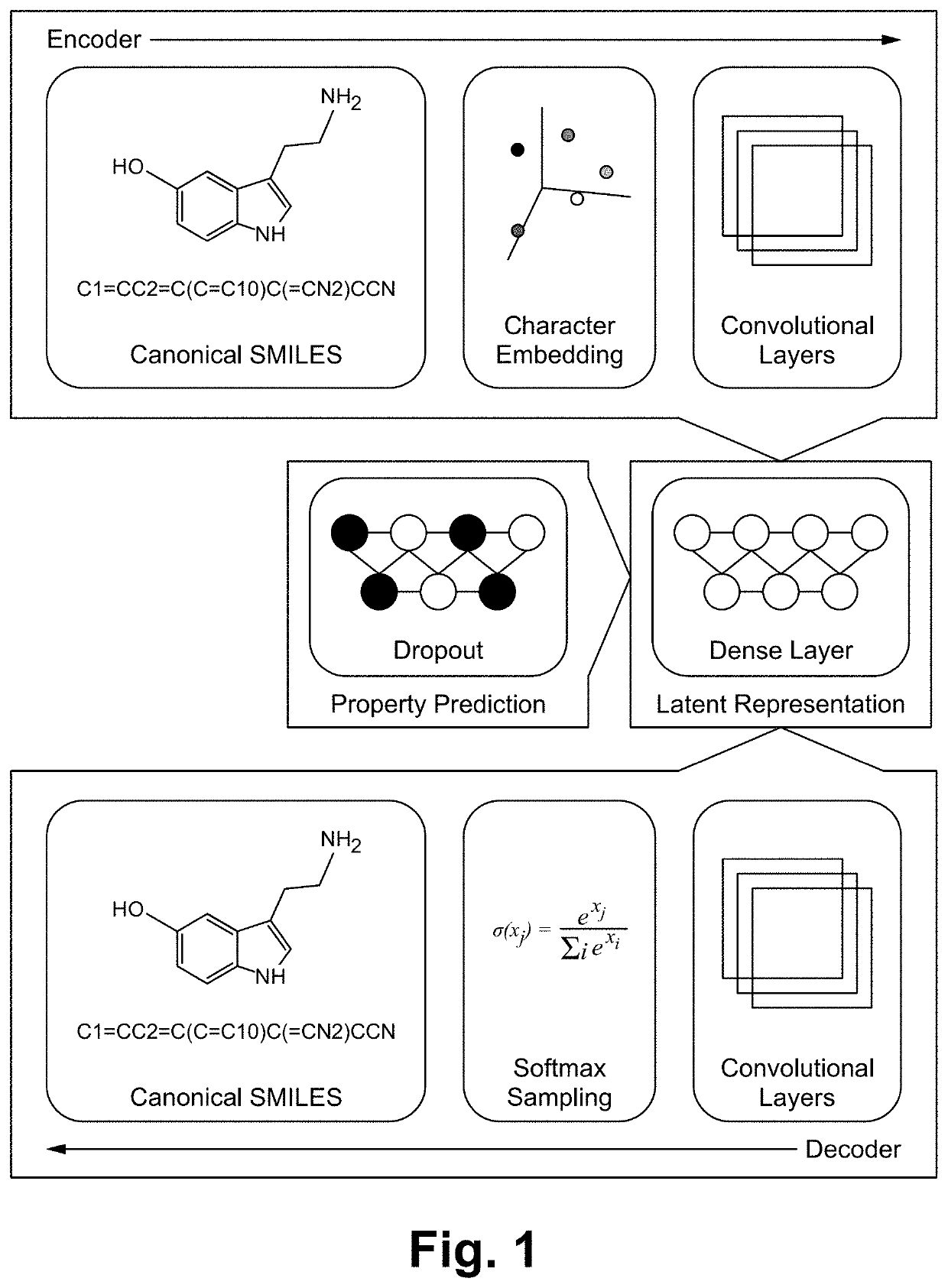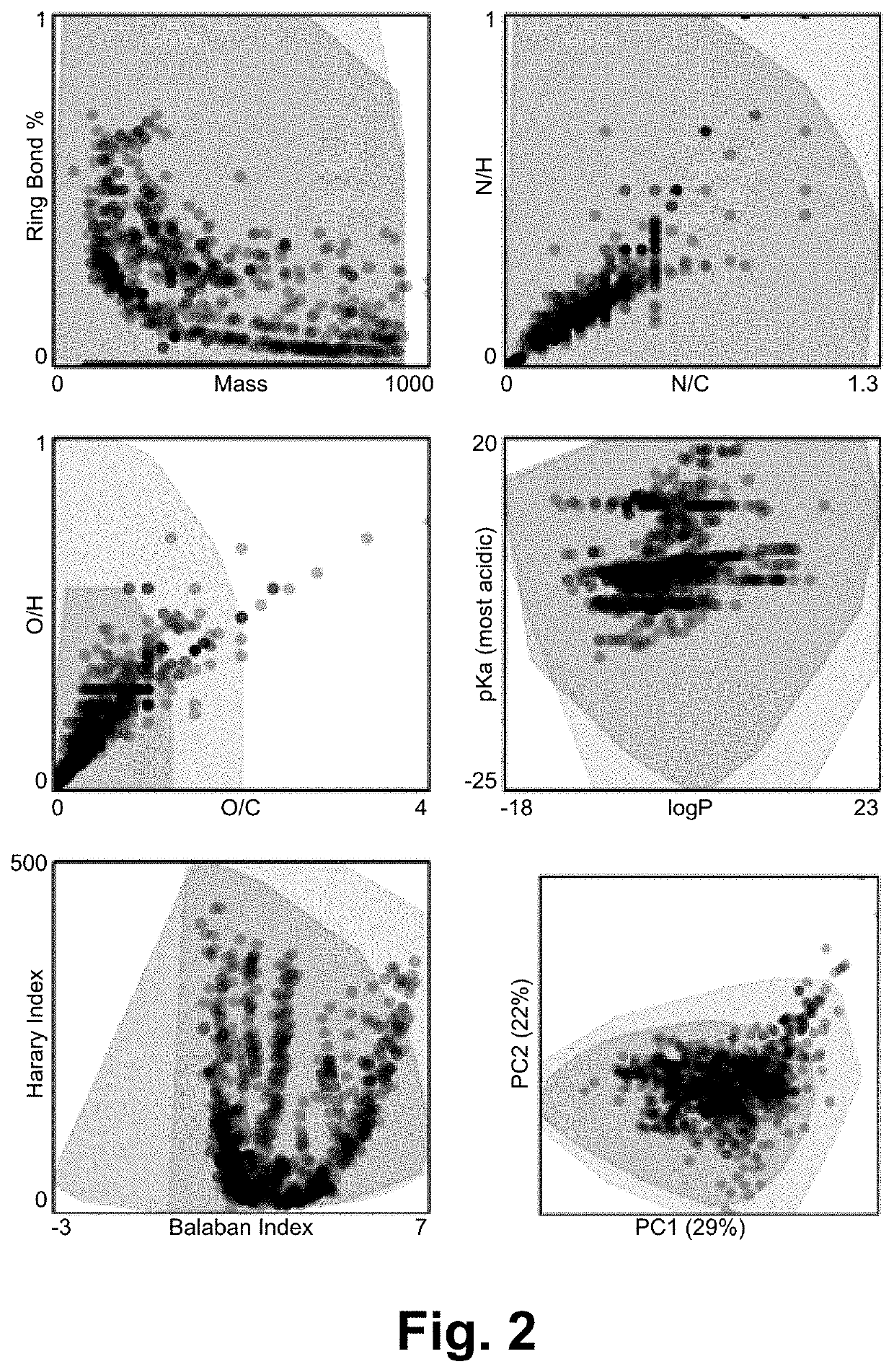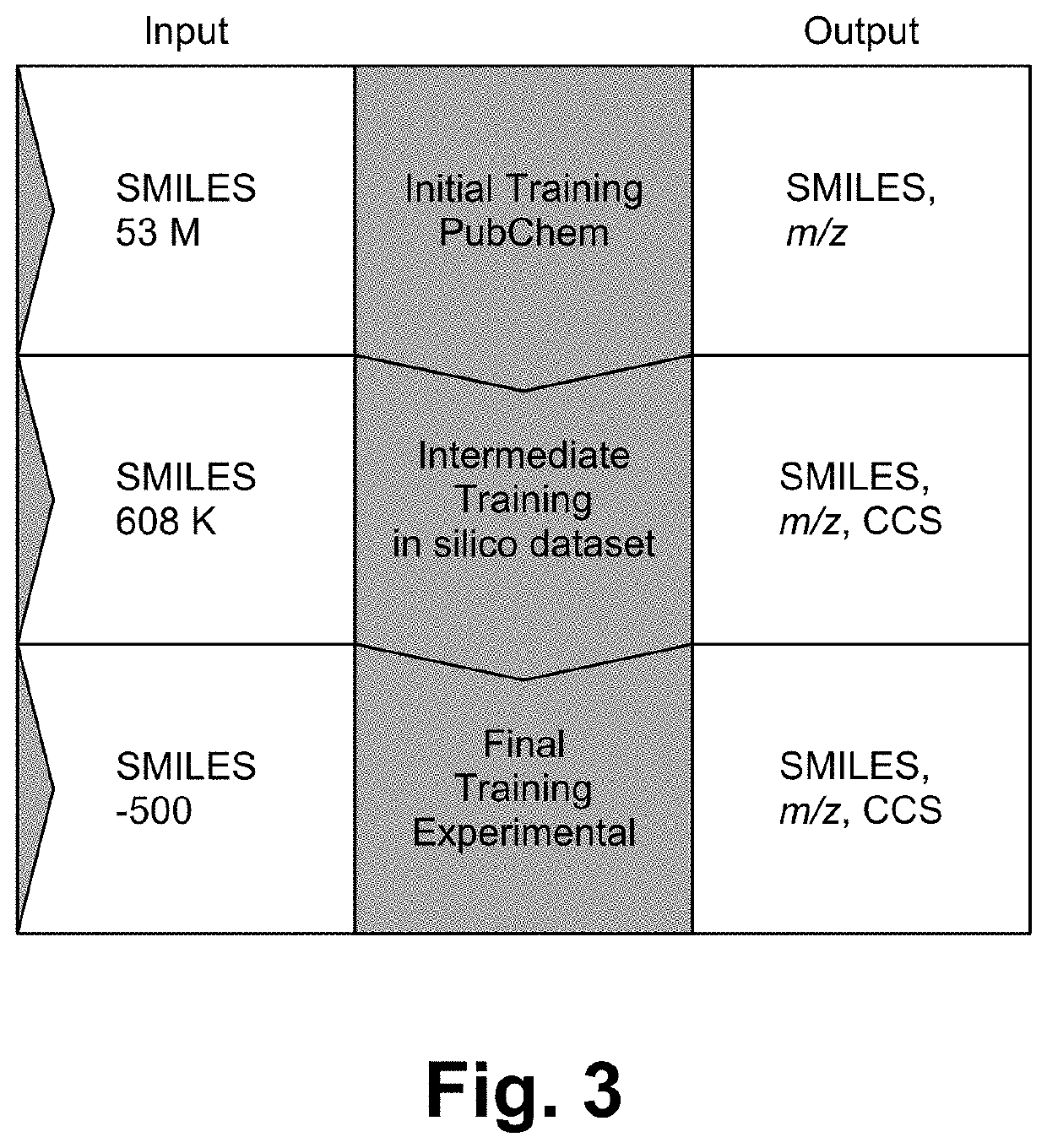Method for simultaneous characterization and expansion of reference libraries for small molecule identification
a reference library and small molecule technology, applied in the field of molecule identification, chemical property prediction, and small molecule structure generation, can solve the problems of lack of a method to generate candidate matches and limit the number of possible identifications, so as to improve the discrimination power of molecular structure discriminators, and improve the percent of valid structures
- Summary
- Abstract
- Description
- Claims
- Application Information
AI Technical Summary
Benefits of technology
Problems solved by technology
Method used
Image
Examples
Embodiment Construction
[0018]In some embodiments, the method is implemented as a framework (e.g., DarkChem). DarkChem is a deep learning framework designed to simultaneously characterize and expand reference libraries for small molecule identification, e.g. metabolomics or exposomics. Through training, DarkChem learns an encoding of molecular structure and chemical properties of interest, which can then be perturbed to yield additional, potentially novel candidates with similar structure, properties, or both. This configuration enables novel molecule discovery from previously unidentifiable metabolomics features in complex biological mixtures.
[0019]Existing and emerging technologies have enabled measurement of chemical properties of molecules in complex mixtures and, in concert, are sensitive enough to resolve even stereoisomers. Despite these experimental advances, small molecule identification is inhibited by (i) a deficiency in reference properties (e.g. mass spectra, collisional cross section, and oth...
PUM
 Login to View More
Login to View More Abstract
Description
Claims
Application Information
 Login to View More
Login to View More - R&D
- Intellectual Property
- Life Sciences
- Materials
- Tech Scout
- Unparalleled Data Quality
- Higher Quality Content
- 60% Fewer Hallucinations
Browse by: Latest US Patents, China's latest patents, Technical Efficacy Thesaurus, Application Domain, Technology Topic, Popular Technical Reports.
© 2025 PatSnap. All rights reserved.Legal|Privacy policy|Modern Slavery Act Transparency Statement|Sitemap|About US| Contact US: help@patsnap.com



